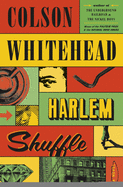
| Publisher: | Doubleday | |
| Genre: | Crime, General, Literary, Thrillers, African American & Black, Fiction | |
| ISBN: | 9780385545136 | |
| Pub Date: | September 2021 | |
| Price: | $28.95 |
| Fiction |
by Colson Whitehead
Harlem Shuffle once again shows off Colson Whitehead's ability to master myriad genres, this time with his first crime novel, the eagerly awaited follow-up to his Pulitzer Prize-winning novels The Underground Railroad and The Nickel Boys. After delving into zombie fiction (Zone One) and even a nonfiction book about poker (The Noble Hustle), Whitehead confidently crafts a pressure-cooker novel about a used furniture dealer sliding into criminality in tumultuous early-1960s Harlem. Ray Carney is trying to escape the shadow of his father, a long-time crook, by establishing himself as a legitimate businessman, while sometimes dabbling in dubiously acquired merchandise. But it's his association with his cousin Freddie that threatens to drag Ray into real trouble again and again, as Freddie's harebrained criminal schemes inevitably go sideways.
Harlem Shuffle makes excellent use of time-honored techniques, piling problem upon problem onto Ray's shoulders. It also benefits from a lived-in sense of place, depicting a Harlem "after the neighborhood tipped over from Jews and Italians and became the domain of Southern blacks and West Indians. Everyone who came uptown had crossed some variety of violent ocean." The neighborhood is far from exempt from civil rights-era battles, though Whitehead's hard-bitten characters tend to view these struggles with a pragmatic, even cynical eye.
As the novel's events come to a head, Ray comes to realize what grabbing a piece of the American dream will cost in a country rigged against him, and has to decide whether he can pay it. For readers, Ray's constant balancing over the abyss makes for a gripping story, as lovingly detailed as it is good pulpy fun. --Hank Stephenson, the Sun magazine, manuscript reader
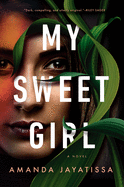
| Publisher: | Berkley | |
| Genre: | Psychological, Women, Suspense, Thrillers, Fiction | |
| ISBN: | 9780593335086 | |
| Pub Date: | September 2021 | |
| Price: | $26 |
| Starred | Mystery & Thriller |
by Amanda Jayatissa
Aspects of Amanda Jayatissa's debut thriller may call to mind several of Alfred Hitchcock's classics--especially Vertigo--but My Sweet Girl is neither derivative nor a Hitchcock homage: it's a homespun tour de force that will elicit an amusement park ride's worth of gasps.
One of the novel's two alternating story lines plays out in San Francisco and is driven by an amusingly foulmouthed, drink-addled and short-tempered narrator. "Be nice, Paloma. Be kind," is one of her many stabilizing self-directed imperatives. As the novel opens, she drunkenly returns to her apartment and finds her roommate, Arun, who has been blackmailing her, dead at the kitchen table ("Focus, Paloma"), his head on the table in a pool of blood. She flees the apartment. When the police finally come on the scene, Arun's body is gone, as is the telltale blood.
The novel's other story line unspools 18 years earlier in Ratmalana, Sri Lanka, at the Little Miracles Girls' Home. Twelve-year-old narrator Paloma and the other young residents of the orphanage are giddily anticipating a visit from a wealthy American couple, each girl harboring the same wish to be adopted.
Jayatissa's gift for plotting is matched by her grace lacing her narrative with rich social themes, among them cultural assimilation and the different values placed on white versus brown bodies. In a canny touch, the novel's plot hinges on the literary classic Wuthering Heights ("Mrs. Evans was going to be my Catherine. She was going to save me," thinks 12-year-old Paloma). My Sweet Girl may well become, likewise, a classic. --Nell Beram, author and freelance writer
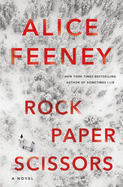
| Publisher: | Flatiron Books | |
| Genre: | Psychological, Family Life, Domestic, Marriage & Divorce, Suspense, Thrillers, Fiction | |
| ISBN: | 9781250266101 | |
| Pub Date: | September 2021 | |
| Price: | $27.99 |
| Mystery & Thriller |
by Alice Feeney
British novelist Alice Feeney (Sometimes I Lie) offers up another thrill ride for readers who dare to accept this delightfully dark and sinuous story that asks how well spouses can truly know each other.
Mr. and Mrs. Wright's marriage has gone all wrong, and they both know a getaway to a remote chapel-cum-romantic-hideaway in the Scottish Highlands is their last chance to save it. Arriving in the middle of a snowstorm, they find the chapel dark and foreboding. While it seems deserted, Mrs. Wright's sighting of a mysterious face at the window proves otherwise. Strangers aren't the only threat on this minibreak, though. "Marriages don't fail, people do," Mrs. Wright says wryly. She made sure to hide her husband's phone, and he turned off the chapel's electricity. Each has secrets, and each has plans for the other. The biggest question is whether they'll have time to carry out their schemes, or if their watcher will interfere first.
Feeney builds a satisfyingly ominous gothic backdrop for this marital tour de force. She misdirects masterfully, and even seasoned mystery readers may have trouble unwinding the truth before it's exposed. Chapters set in the present alternate with an undelivered letter from wife to husband for each year of their marriage, filled with juicy confessions and spine-tingling passive aggression. Slick and dangerous as a hairpin turn on an icy road, this cunning labyrinthine novel skates on the dark edge between love and madness, and packs a sinister loop-de-loop into its explosive conclusion. --Jaclyn Fulwood, blogger at Infinite Reads
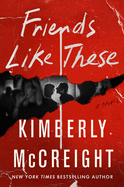
| Publisher: | Harper | |
| Genre: | Psychological, Domestic, Suspense, Thrillers, Fiction | |
| ISBN: | 9780063061569 | |
| Pub Date: | September 2021 | |
| Price: | $27.99 |
| Mystery & Thriller |
by Kimberly McCreight
No one should want to be a part of the messy, self-centered group of college pals in Kimberly McCreight's shrewd, insightful fourth novel, Friends Like These--a look at the dark side of friendship.
Wealthy Jonathan Cheung and friends Stephanie Allen, Maeve Travis, Keith Lazard and Derrick Chism--all Vassar alumni--claim they are bonded by unconditional love, devoted to each other, willing to forgive any transgression. Instead, guilt, fear and secrets unite them. A decade ago in college, a young man fell off a roof while they were all drinking. Rather than call an ambulance or the police, they left him there, worried that this accident would taint their futures. Later, wracked with guilt, Keith's girlfriend died by suicide.
Now, they've all gathered for the weekend at Jonathan's Catskills mansion, but the real agenda is to force New York City gallery owner Keith into rehab. A car crash, after which one friend is dead and one is missing, brings in Detective Julia Scutt, whose sister's murder 20 years ago still has repercussions. Another unrelated death ramps up the action.
McCreight (A Good Marriage) swirls the plot with each friend's personality while building on the local residents' ongoing tensions with the wealthy weekenders, with intimidating contractors who are demanding payment that Jonathan's fiancé, Peter, has neglected, and mobsters whom Keith owes. Each plot point adds to the fractures in the group, as do the anonymous e-mails threatening to expose each person's secret, leading to the surprising denouement.
The group's carelessness with each other and with outsiders emphasize their chaotic lives in the engrossing Friends Like These. --Oline H. Cogdill, freelance reviewer

| Publisher: | Avon | |
| Genre: | Women, Romantic Comedy, Historical - Regency, Historical - Victorian, Romance, Fiction | |
| ISBN: | 9780063056152 | |
| Pub Date: | August 2021 | |
| Price: | $8.99 |
| Romance |
by Sarah MacLean
Sarah MacLean kicks off her Hell's Belles series with Bombshell, featuring the bold and scandalous Lady Sesily Talbot in a feminist historical novel that will delight MacLean's longtime fans just as it introduces new readers to her work.
Sesily Talbot has never cared much for her reputation. The London elite calls her "Sexily" behind her back, a moniker she does nothing to discourage, in no small part because it's not entirely untrue--and because it gives her cover to go about her business taking down the worst of the London aristocracy without anyone noticing. But when her sister's best friend and business partner, Caleb Calhoun, returns to London after years away, she quickly realizes that her ruse as the reputation-less Lady may not hold up to his (very close) scrutiny.
MacLean (Daring and the Duke) has a knack for historical romances filled with both tension and intrigue, and Bombshell is no exception. The chemistry between Sesily and Caleb is substantial on every page of this well-paced tale, with passionate scenes between the two that defy the classic trope of the virginal aristocratic lady seduced by an all-knowing male suitor of some variety. Even more enticing than the romance between the two, though, is the intrigue behind both players' resistance to their undeniable attraction to one another. And at the heart of that intrigue is Sesily and her band of forward-thinking renegade friends--each with the promise of romances of their own to come. --Kerry McHugh, blogger at Entomology of a Bookworm
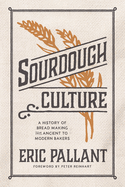
| Publisher: | Agate Surrey | |
| Genre: | Cooking, General, History, World, Courses & Dishes, Bread | |
| ISBN: | 9781572843011 | |
| Pub Date: | September 2021 | |
| Price: | $29 |
| Food & Wine |
by Eric Pallant
Searching #sourdough on Instagram produces more than 5.1 million results--and counting! An unexpected resurgence in the bread's popularity is perhaps one of the more unlikely side effects of the Covid-19 pandemic, making Eric Pallant's Sourdough Culture: A History of Bread Making from Ancient to Modern Bakers a perfectly timed publication.
Pallant, an environmental sciences professor, has spent decades baking sourdough and years researching the history of sourdough and bread-making. His interest began in the 1970s when he was given some starter that purportedly was begun by 19th-century gold miners in Cripple Creek, Colo. Sourdough Culture is both the fascinating story of his journey to find the roots of his own starter and a well-researched history of human bread-making and consumption.
Pallant covers bread throughout many eras, including ancient Egypt and the French Revolution, showcasing the natural wonder that is sourdough. As he explains, "A bread made with sourdough bears more than six thousand years of history." He explores those millennia of history through delectable recipes from multiple cultures, interviews with modern bakers, historical examples of processes that tried to take breadmaking shortcuts, and detailed scientific explanations of why sourdough is sour. Sourdough Culture is perfect for history buffs, food science nerds and bread eaters alike. It will inevitably have sourdough-proficient readers feeding their starters in preparation for a baking bonanza, and is bound to inspire novices to begin a sourdough journey of their own. --Jessica Howard, bookseller at Bookmans, Flagstaff, Ariz.
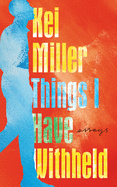
| Publisher: | Grove | |
| Genre: | Biography & Autobiography, Caribbean & Latin American, Personal Memoirs, Literary Collections, Cultural, Ethnic & Regional, African American & Black, Essays | |
| ISBN: | 9780802158956 | |
| Pub Date: | September 2021 | |
| Price: | $27 |
| Starred | Biography & Memoir |
by Kei Miller
Literary chameleon Kei Miller (The Cartographer Tries to Map a Way to Zion) has produced award-winning short stories, novels, poetry and essays. Things I Have Withheld is arguably his most stupendous title to date. These 14 exquisitely vulnerable essays explore his Jamaican heritage, his British residency, his worldwide travels. Divulging searing conversations he's self-silenced, Miller--a globe-trotting gay Black man--produces a magnificent examination of race, sexuality and identity. "The moments when I am most in need of words are exactly the moments when I lose faith in them," he writes. Reading Miller is an act of empathy: "I suspect it is the same for a great many of us. We keep things to ourselves. We withhold them because of fear."
Miller begins with a call for assistance from James Baldwin: "I think everything of your essays and it is essays that I have been trying to write but have stopped and need your help"--especially regarding confrontations he's repeatedly eschewed about careless racism. In the standout "Mr Brown, Mrs White and Ms Black," three Jamaican neighbors anticipating an upcoming party contemplate experiences based solely on their skin color. Other essays reveal family secrets about ancestry; crimes against Black bodies and women's bodies; presumptions outsiders vocalize to and about Jamaicans; the fine line between homophobia and belonging; white entitlement and appropriation.
As a gay Black man from a Caribbean island working as "a full-fledged professor" in Britain--a historical center of colonialism--Miller by necessity has become especially facile in code-switching. His written language effortlessly adapts as he slips from his "own Jamaican patois" to adaptations and mannerisms necessary to deal with various locations, situations, communities. What he produces from such experiences is a wrenching record--gorgeously encapsulated--of what he's had to withhold to survive. Filling the silence proves lifesaving. --Terry Hong, Smithsonian BookDragon
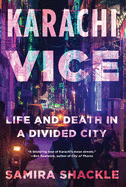
| Publisher: | Melville House | |
| Genre: | India & South Asia, Travel, Developing & Emerging Countries, Asia, History, Social Science | |
| ISBN: | 9781612199429 | |
| Pub Date: | September 2021 | |
| Price: | $27.99 |
| Social Science |
by Samira Shackle
In Karachi Vice: Life and Death in a Contested City, British-Pakistani investigative reporter Samira Shackle incisively explores recent violent events in Karachi, Pakistan's industrial and financial center, through the accounts of five working-class Karachiites.
Shackle offers a truly intimate view of the port city's reckoning with terrorism and crime, having spent extended periods in Karachi's most dangerous neighborhoods to understand the complex dynamics among rival gangs, corrupt officials, extremist political groups and citizens struggling to make an honest living. A storyteller at heart, she captures with engaging detail the day-to-day experiences of a schoolteacher, an ambulance driver, a television reporter, a community architect and a villager protesting the destruction of her home by a wealthy developer.
The ambulance driver, Safdar, works for Pakistan's largest charitable organization, the Edhi Foundation. The foundation's office in Karachi keeps a stone swing outside for abandoned babies, while its hospital and ambulances treat the poor, and rescue those injured in violent political clashes and gang-related crimes. Shackle juxtaposes the good work of the foundation and people like Safdar with the criminal masterminds who control public access to essential utilities like water, and the ineffectual, corrupt authorities who look the other way.
Understanding Karachi, perched on the Arabian Sea, is critical to understanding Pakistan, says Shackle, who lives in London and helpfully chronicles major events of the last 30 years. The author's enthusiasm for her mother's birthplace is contagious and she is eager for readers to experience, through her debut, the gravitational pull and irrepressible sprit of Pakistan's most cosmopolitan metropolis. --Shahina Piyarali, reviewer
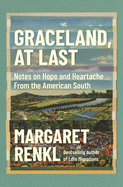
| Publisher: | Milkweed Editions | |
| Genre: | Nature, Travel, United States, South - East South Central (AL, KY, MS, TN), Literary Collections, Civics & Citizenship, Essays, Political Science | |
| ISBN: | 9781571311849 | |
| Pub Date: | September 2021 | |
| Price: | $26 |
| Essays & Criticism |
by Margaret Renkl
Everyone should have a friend like Margaret Renkl: thoughtful, engaged, compassionate and, above all, acutely observant. Since that's not always possible, the next best thing is to share her company in the diverse and consistently stimulating essay collection Graceland, at Last: Notes on Hope and Heartache from the American South.
An offhanded conversation in 2015 led to an invitation to Renkl (Late Migrations: A Natural History of Love and Loss) to write her first column for the New York Times. A few columns later, she was offered a monthly slot to write about "the flora, fauna, politics and culture of the American South," hoping to educate those living outside that territory that "there is far more to this intricate region than many people understand."
Arranged by themes that include the natural world, politics and social justice, family and community, and arts and culture, Renkl's 59 concise essays demonstrate impressive erudition, especially when she ventures into nature to explore subjects like the revival of the Tennessee coneflower, the decline of pollinators like the monarch butterfly and her disdain for the U.S.'s pesticide-drenched "killer lawns." Her prose is both graceful and evocative, well-attuned to "the unfathomable natural beauty of a place that is still predominantly rural and very often wild."
There are portions of Graceland, at Last certain to provoke the ire of both the South's fiercest critics and its equally ardent defenders. What they all should be able to agree on is that Margaret Renkl is both unfailingly honest and deeply empathetic in creating the vivid portrait of her home region that emerges organically from these intensely personal and well-informed essays. --Harvey Freedenberg, freelance reviewer
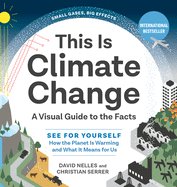
| Publisher: | The Experiment | |
| Genre: | Nature, Meteorology & Climatology, Earth Sciences, Environmental Conservation & Protection, Science, General, Global Warming & Climate Change | |
| ISBN: | 9781615198269 | |
| Pub Date: | September 2021 | |
| Price: | $14.95 |
| Nature & Environment |
by David Nelles, Christian Serrer
Using research gathered from more than 100 scientists, David Nelles and Christian Serrer interpret climate change data and capture it visually in This Is Climate Change: A Visual Guide to the Facts. They urge readers to "See for Yourself How the Planet Is Warming and What It Means for Us" as they walk their audience through clearly illustrated, logically ordered chapters covering topics that include how the Earth's climate functions and the impact of rising temperatures on the cryosphere (frozen areas), the oceans, weather, ecosystems and, of course, humans.
Of significant interest to climate change doubters, or those who simply want better to understand human-made climate change, is a detailed section that explains and negates other possible causes of global warming. Nelles and Serrer, university students in Germany, are dedicated to presenting a balanced explanation of climate change, free from hyperbole and thoroughly cited.
Though this tidy little book, which reads like a nonfiction picture book aged up for adults, comes in at only 128 pages, it's packed with information (a lengthy bibliography is provided digitally). This book will take some time to digest, but the resulting understanding will prove useful in conversation or when interpreting the news.
At the end, the young authors urge, "We must all become involved in the public conversation, and support sustainability, environmental protection, and climate justice, both at work and in our everyday lives."
This balanced, visual approach will help readers engage in this conversation as informed global citizens. --Suzanne Krohn, editor, Love in Panels
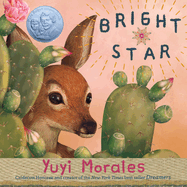
| Publisher: | Neal Porter/Holiday House | |
| Genre: | Emotions & Feelings, People & Places, Emigration & Immigration, Parents, Family, Social Themes, United States - Hispanic & Latino, Juvenile Fiction | |
| ISBN: | 9780823443284 | |
| Pub Date: | September 2021 | |
| Price: | $18.99 |
| Starred | Children's & Young Adult |
by Yuyi Morales
Bright Star, a powerful, radiant picture book by Pura Belpré Award winner and Caldecott honoree Yuyi Morales (Dreamers), begins with an eager observation: "Child, you are awake!"
A doe sees that her fawn has opened her eyes. After allowing the fawn to wake gently, the mother coaxes her babe into getting ready for the day as if it's a celebration: "You are ALIVE! You are a bright star inside our hearts." Then, with a cry of "Vámonos!" they are ready to go. The pair walk through the desert and on every page, new animals join them. The passage turns dangerous as they reach a cement wall topped with barbed wire--a wall that impedes the migration patterns of many animals. The soft earth tones and golds of the day are traded for marbled grays with cool splashes of a starry sky. Though predatory animals have come out, they are there to protect the animals who can't protect themselves.
Morales pairs sparse but evocative language with dream-like illustrations made with acrylic paint on paper, photographed textures, digital painting, weaving and embroidery. Every sentence is an encouraging caress and reminder to children that "we"--loved ones, caretakers, allies--"are here to protect you." She fills each page with magnificent creatures, and her use of light ignites the images with the warmth of the sun or the gentle glow of the moon. Despite the grueling metaphor of desert migration, and an allegory for human immigration, Morales's words have a susurrating effect that lets readers know there is a new day ahead. Bright Star is a marvel and a masterpiece, both a lullaby and a cry for survival. --Zoraida Córdova, author and freelance book reviewer
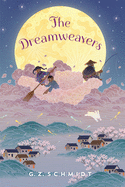
| Publisher: | Holiday House | |
| Genre: | Adaptations, Fantasy & Magic, Legends, Myths, Fables, Asian, Juvenile Fiction, Fairy Tales & Folklore | |
| ISBN: | 9780823444236 | |
| Pub Date: | September 2021 | |
| Price: | $17.99 |
| Children's & Young Adult |
by G.Z. Schmidt
The Dreamweavers by G.Z. Schmidt (No Ordinary Thing) is set during China's Ming Dynasty and seamlessly incorporates folklore and magic into a vivid middle-grade adventure about sibling bonds and destiny.
Twelve-year-old twins Mei and Yun don't have many friends in their small village in the mountains of southern China. They were raised by their Grandpa Wu after their parents disappeared six years ago in the dreadful, haunted City of Ashes. Grandpa Wu taught them that "not even the most powerful person in the world can diminish your true value." This lesson is important, as the twins often see things others don't: "soft mists hovering over the river of fish" or sunny wisps of smoke hanging over their cat's ears. When Grandpa Wu is arrested by the emperor's son for allegedly serving him tainted mooncakes at the Mid-Autumn Festival, the twins embark on a rescue mission that reveals an ancient curse and unlocks long-lost family secrets.
Chinese mythology and philosophy play a prominent role in The Dreamweavers, with Schmidt sewing the Jade Rabbit (a popular character in Chinese culture), the dream world, and yin and yang into her spellbinding story. One successful way Schmidt does this is with the twins' personalities. While Mae is "as restless as an ant on a frying pan," her brother, Yun, is "careful, cautious" and moves at an "ant's pace." The twins' opposite traits complement each other and strengthen their connection, helping them on their quest. An entrancing story about the power of dreams, helping others and controlling our own destinies. --Lana Barnes, freelance reviewer and proofreader